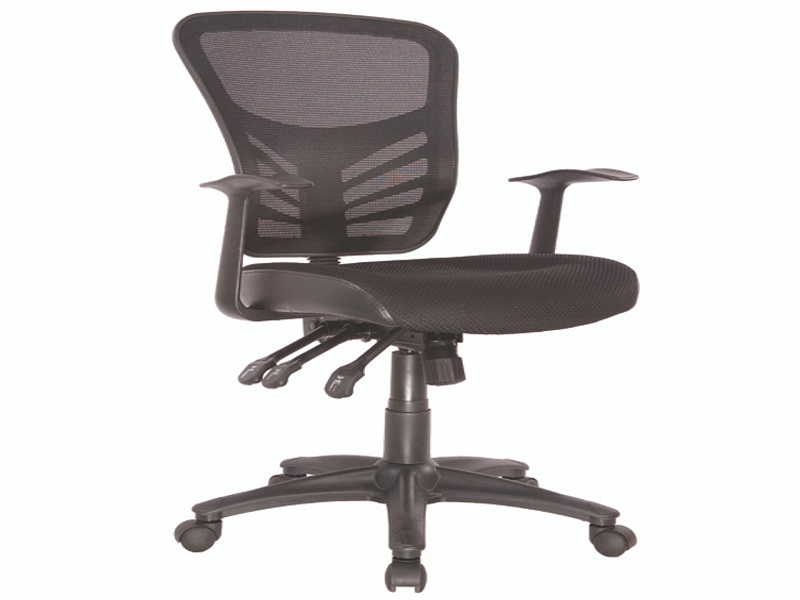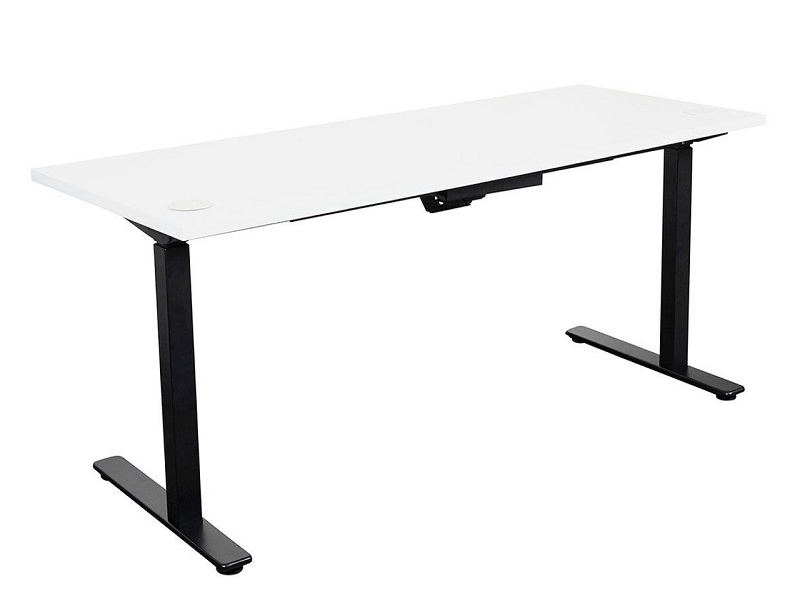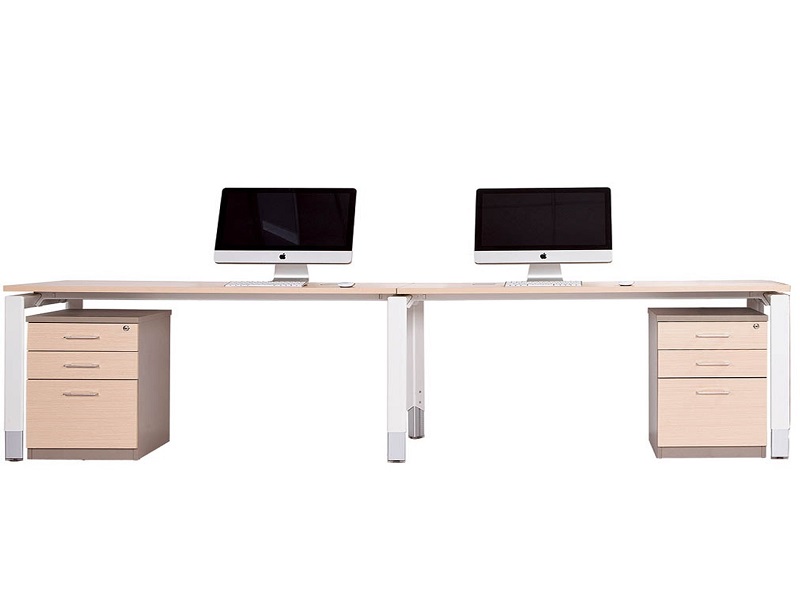The Ultimate Guide to Ergonomic Furniture: Enhancing Comfort and Productivity
Posted by The Urban Hyve Team on 16th Oct 2024
In today's fast-paced world, where more and more people spend extended hours at their desks, the importance of ergonomic furniture cannot be overstated. From office workers to students to remote freelancers, ensuring a comfortable and supportive workspace is essential for promoting productivity, preventing musculoskeletal disorders, and enhancing overall well-being. In this comprehensive guide, we'll explore everything you need to know about ergonomic furniture, from its benefits to key features and how to choose the right pieces for your needs.
Understanding Ergonomic Furniture: What Sets It Apart?
Ergonomic furniture is designed with the user's comfort and health in mind. Unlike traditional furniture, which often prioritises aesthetics over functionality, ergonomic furniture is engineered to support the body's natural posture and movements, reducing strain and fatigue during long periods of use. Whether you're sitting at a desk, typing on a keyboard, or working on a computer, it aims to optimise comfort and productivity while minimising the risk of musculoskeletal injuries such as back pain, neck strain, and repetitive strain injuries (RSIs).
Benefits of Ergonomic Furniture: Why It Matters
Investing in ergonomic furniture offers a myriad of benefits for both individuals and organisations. Here are some key advantages:
1. Improved Posture
Ergonomic chairs and desks are designed to promote proper posture by providing support where it's needed most. This helps reduce the risk of developing poor posture habits that can lead to chronic pain and discomfort over time.
Yarra Ergonomic Mesh Task Chair
2. Increased Comfort
Ergonomic furniture is designed for comfort, with features such as adjustable lumbar support, padded armrests, and contoured seat cushions. By minimising pressure points and distributing weight evenly, it allows users to work comfortably for longer periods without experiencing discomfort or fatigue.
3. Enhanced Productivity
A comfortable workspace is a productive workspace. By reducing discomfort and minimising distractions, ergonomic furniture can help individuals stay focused and engaged in their work, leading to increased efficiency and output.
4. Reduced Risk of Injury
Poorly designed furniture can contribute to a range of musculoskeletal injuries, including back pain, neck strain, and carpal tunnel syndrome. Ergonomic furniture is specifically engineered to reduce the risk of these injuries by supporting the body's natural alignment and movement patterns.
5. Support for Overall Well-Being
In addition to physical health benefits, it can also have a positive impact on mental well-being. By creating a comfortable and supportive workspace, individuals are better able to manage stress, maintain focus, and achieve a better work-life balance.
Key Features of Ergonomic Furniture: What to Look For
When shopping for ergonomic furniture, there are several key features to consider:
1. Adjustability
Look for chairs and desks that offer a high degree of adjustability, including adjustable seat height, armrests, and lumbar support. This allows users to customise their workspace to fit their unique body dimensions and preferences.
Summit Electric Sit to Stand Desk
2. Supportive Design
Choose furniture with ergonomic design features such as contoured seat cushions, curved backrests, and adjustable headrests. These features provide optimal support for the spine, pelvis, and neck, reducing the risk of strain and discomfort.
3. Quality Materials
Invest in furniture made from high-quality materials that are durable, supportive as well as long lasting. Look for chairs with breathable mesh upholstery, sturdy metal or plastic frames, and also smooth-gliding casters for easy mobility.
4. Ease of Use
Opt for furniture that is easy to adjust and operate, with intuitive controls and user-friendly features. This ensures that individuals can make quick and effortless adjustments to their workspace without interrupting their workflow.
5. Aesthetics
While functionality is paramount, aesthetics also play a role in creating an inviting and inspiring workspace. Choose furniture with sleek, modern designs that complement your existing decor and enhance the overall look and feel of your workspace.
Choosing the Right Ergonomic Furniture: Tips and Considerations
When selecting ergonomic furniture for your home or office, it's important to consider your specific needs and preferences. Here are some tips to help you choose the right pieces for your workspace:
1. Assess Your Requirements
Take stock of your current workspace and identify any areas where ergonomic improvements are needed. Consider factors such as the amount of time you spend sitting, your primary tasks and activities, and any existing health concerns or discomfort.
Oblique Height Adjustable 2 Person Straight Desk - Soft Maple
2. Set a Budget
Determine how much you're willing to invest in ergonomic furniture and prioritise your purchases based on your budget. While high-quality ergonomic furniture can be a significant investment, it's important to consider the long-term benefits for your health and well-being.
3. Try Before You Buy
Whenever possible, test out ergonomic furniture in person before making a purchase. Sit in different chairs, adjust the settings, and evaluate the overall comfort and support. This will help you determine which pieces are the best fit for your body and workspace.
4. Read Reviews
Take the time to research different brands and models of ergonomic furniture online, reading reviews and testimonials from other users. Pay attention to feedback regarding comfort, durability, and overall satisfaction to help inform your decision-making process.
5. Consider Additional Accessories
In addition to chairs and desks, consider investing in ergonomic accessories such as keyboard trays, monitor stands, and footrests to further enhance your workspace. These accessories can help optimise your posture and comfort while working.
Conclusion
Ergonomic furniture plays a vital role in creating a comfortable, supportive, and productive workspace. By investing in high-quality ergonomic chairs, desks, and accessories, individuals can reduce the risk of musculoskeletal injuries, improve posture and comfort, and enhance overall well-being. Whether you're working from home, studying for exams, or simply spending extended hours at your desk, prioritising ergonomics is essential for maintaining health, productivity, and quality of life.













